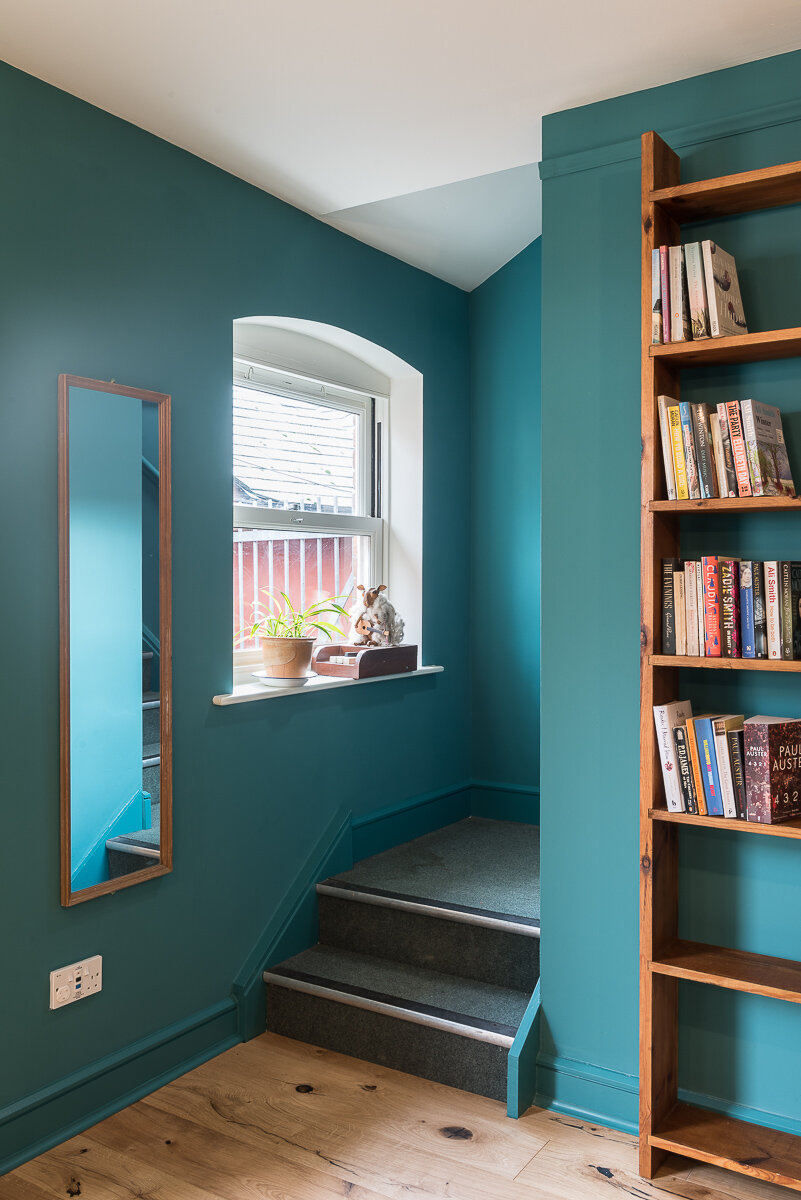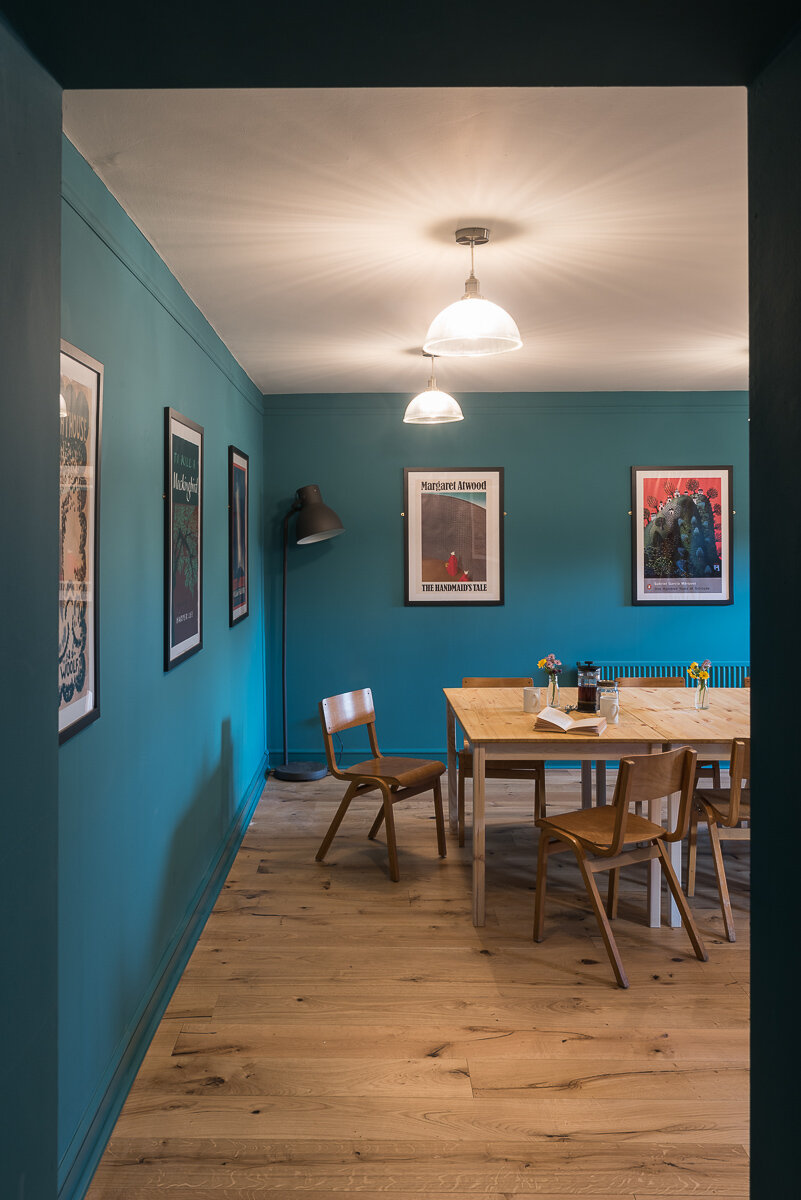Leaving Lockdown, again
Hi Everyone
This month’s ‘Lockdown, YouTube Study Group’ is going to be looking at famous pop stars and their spoilt, precocious, but vulnerable musical offspring. We will be asking the question ‘If your Mum or Dad is a world renowned superstar are you better off training to be an estate agent than trying to emulate them?’
As you know, if your folks are famous thespians no such question occurs, you just naturally fall into the family business as any self-respecting Sheen, Douglas or Fonda will tell you.
I started thinking about pop star’s famous kids when I came across a video of Ry Cooder’s son Joachim but I struggled to think of more than half a dozen other notable brats, that is, until I stumbled across a website called ‘Rock Stars Who Have Famous Kids’. It turns out pretty much everyone who either strummed a guitar or bashed a drum has a brace of kids who followed in their footsteps. Here in order to help you study the phenomenon I have divided them into are 4 different categories.
1. Kids of parents who are so bloody famous they have no chance of equaling their achievements however many hours are spent practicing in their Beverly Hills bedroom. I shall direct you to just 3 of this elevated clan.
Sean Lennon having a pretty good crack at Isolation.
Jakob Dylan covering a Mamas and Papas song complete with hot band and famous friends.
Leonard Cohen’s son Adam looking the part with a nifty band of his own and pretty raffish line in hats, neckties and designer stubble.
2. Kids who are really good instrumentalists but not necessarily wanting to hog the limelight.
Zac Starkey who is probably as good a drummer as Ringo and has had some high profile drum seats most notably with The Who.
Dweezil Zappa who has his own band, runs a Mothers of Invention revival band and makes YouTube vids about guitars and guitar playing.
3. Kids from folky or jazzy dynasties who were playing banjo with Mum and Dad before they could talk.
The Wainrights – Loudon and first wife Kate McGarrigle did pretty good begetting both Rufus and Martha Wainright. Below is a rather rubbish phone vid of Rufus, Martha and Kate singing together.
The Marsalis Family – Dad, Ellis played piano with Cannonball Adderley before becoming a music teacher in New Orleans. He taught his six sons four of whom, Wynton, Branford, Delfeayo and Jason have gone on to become famous throughout the jazz world.
Carthy/Waterson - Eliza Carthy is the daughter of legendary folk artists Norma Waterson and Martin Carthy and her aunt and uncle are Lal and Mike Waterson and Lal’s kids are performers Marry Waterson and Oliver Knight.
Here in Presteigne we have watched the rise of our very own (shared with Clun and Bishops Castle) dynasty, as the children of John Kirkpatrick and Presteigne’s favourite choir arranger and hammer dulcimer maestro Sue Harris, all became players. Benji is a founder member of Bellowhead (see video below) and the whole gang John, Jobie, Benji, George and Fergus sometimes play together as Kirkophany.
4. The final group is for artists who I am such a big fan of that I have actually made an effort to look up their children just to see if the magic got passed on.
Joachim Cooder is a drummer and the son of Ry Cooder (the worlds best slide guitar player) so its no surprise to find him playing the Mbira, in fact the biggest Mbira I have ever seen, so no competition with Dad there. He has also sensibly co-opted Ry into his band as an all-purpose back up musician.
Meanwhile Baxter Dury, the late great Ian Dury’s son, has avoided embarrassing comparisons with dad by doing not very much at all! He’s got a big band and a bunch of back up singers to do all the heavy lifting and he just sort of mumbles a bit in the background. Smart move Baxter.
Well finally, let’s end on a high note with perhaps the best famous kid story of the lot, Norah Jones. Jones is the daughter of Indian sitar master and composer Ravi Shankar and concert producer Sue Jones, and is the half-sister of fellow musicians Anoushka Shankar and Shubhendra Shankar. However, Dad Ravi split up with mum when she was seven, never for a moment imagining little Norah was going to go on to sell 50 million albums worldwide (hey what a bummer Ravi). Here is a delightful bit of lockdown film from Norah and her band-mate Sasha Dobson just having fun.
Pete
BALDWIN & GUGGISBERG - Philip and Monica
Like a great many of you, we have been thoroughly amused as well as uplifted by the amazing posts on the Lugg Blog. We have shared them widely on both sides of the Atlantic. You don't need to be a member of the community to appreciate all that talent and wonderful things being shared.
Over the last eight months we have made two trips to Denmark on account of our exhibition at a museum in Ebeltoft, an historic port on the Jutland peninsula. In October we went back for a performance event that had been originally planned for the opening. Inspired by the incredible bonfires that Presteigne assembles annually for Guy Fawkes, we consulted with Owen and Richard Rimington as to the proper way to build these things, and thanks to their crucial input we were able assemble a bonfire that was much appreciated, even if the participants were necessarily few.
There were some special features: a few minutes after lighting, a wicked squall with high winds and drenching rain flew in and nearly swept the whole thing away. Yet another example of unintended consequences. The irony was not lost on us.
While there, the museum did an interview with us about the exhibition which gives a little insight into what it's about.
ROAD-TESTING THE CUNNING LITTLE VIXEN
Jonathan Lyness
“Foxes”, by Sue Lyness (1936-2002)
In my previous piece for the Lugg Blogg, which readers can find here, I described how, at the point of the first lockdown, I’d started work on a new reduced orchestration of Janacek’s great opera The Cunning Little Vixen. The plan has been to perform this transcendental work with Mid Wales Opera as and when things get back to some kind of normal, but when this will be, no one really knows. However, on Monday 9th November I got to hear my new arrangement for the first time. On that Monday morning, and following my habitual 7.00am ‘wake up’ coffee, I jumped in the car and, via foggy Hereford and Monmouth, drove to the stage door of the Hoddinott Hall in Cardiff, contained within the Wales Millennium Centre and home to the BBC National Orchestra of Wales.
For someone accustomed to the backstage facilities of some of the UK’s illustrious summer opera festivals, or the numerous and sometimes unfathomable corridors and staircases of theatres across Wales, the Hoddinott Hall is another world. For a start, at no point did I climb a staircase and then wonder where I was! It seemed to me that, in this respect, it even put the new Royal Opera House to shame (on the few occasions I’ve been immersed in backstage corridors there, I really have lost my bearings). Perhaps it was the BBC’s COVID-safe one-way system that helped, effortlessly at ease with the natural flow of the building and not without a hint of ‘follow the yellow brick road’. How could anyone possibly get lost or disorientated?
The hall itself is a revelation. As rehearsal studio, concert hall and recording venue, its acoustics are magnificent – generous and warm, yet detailed and refined. Perhaps, with hindsight, this wasn’t the best place to road test an arrangement that, out in the field, will need to survive in venues not quite as invested with such acoustic technology. That said, I wouldn’t have missed it for the world. Janacek, even in its original orchestration, needs all the help it can get. The last time I heard the piece live was at the Barbican in 2019 where Rattle, with the LSO, produced a miraculously beautiful sound out of the composer’s often tricky textures, helped, I’m certain, by what the Barbican’s dated acoustics still have to offer.
And so there I was, at 10.00am, with the BBC NOW players assembled and socially distanced (2.5 metres ‘nose to nose’, I was assured), and all of us de-masked and at our ‘workstations’ (I’m really getting into the lingo here). It’s always a bit of an adventure working with a group of new players, not to mention slightly nerve-wracking, but within seconds of getting going I knew it was going to be a good day.
Jonathan Lyness with the BBC NOW, 9 November 2020.
People often discuss and compare their favourite openings of operas. Truth be told, most famous operas have great openings. For me though, Janacek takes some beating and the opening of Vixen (along with that of the same composer’s Katya Kabanova) is the most extraordinary. From bar one he creates a woodland world that is atmospheric and mysterious. Instrumentally, the opening contains a sign of things to come, with a plaintive theme on the violas, gently flowing violins, and a supportive cor anglais, that melancholic instrument made famous by the composer’s great Czech compatriot Dvorak in his New World Symphony.
Bar two sees Janacek introducing one of this opera’s trademark ‘effects’, and the first obvious challenge of the day. The violins, with a rush of quick short notes, are instructed to play ‘col legno’ – that is, with the wood (or stick) of the bow being bounced off the string. With a full orchestra one can virtually here the sounds of small mammals scurrying through the wooded undergrowth. But in my arrangement, I have the princely sum of just two violins. Nevertheless, with a half ‘col legno’ – that is, with the bow on its side so that both hair and stick touch the string – the two violinists created their own brilliant effect, albeit within the Hoddinott’s wonderful acoustic.
The day continued, and it was great to gauge players’ reactions to what was being asked of them. I loved the way the clarinettist (who I remembered from when we overlapped as students at Bristol University some 30 years ago) raised his shoulders and eyebrows as all clarinettists do when asked to play something unexpectedly high and virtuosic. I loved it when the oboist looked suitably bemused when I asked her, at one of Janacek’s strange changes of metre, to keep playing but shut her eyes – ie, not look at me! And I loved hearing the harp and glockenspiel spontaneously and ingeniously mimicking the sound of a celesta. Vixen, with its cycle of life at its heart, appears to have been an apt choice for such a year and such a day as this; as we reached the end, so good was the sound that I made the BBC musicians play the last section one last time, and as the whole building seemed to resonate I felt, perhaps, a similar sense of renewal to that which this opera is all about.
The day ended at 5.00pm and I was sorry to leave. The string players, dog tired, had a Bartok Divertimento rehearsal scheduled for that evening. Others left the building whilst chairs were sanitised, stands re-positioned and Vixen music put away. With all of the ceremony of my morning arrival - the welcome, the guidance, the health and safety, the ‘yellow brick road’, the fabulous dressing room (MWO please take note!) and the sheer glamour of the hall – my exit was hilariously unceremonial. On leaving my dressing room I turned left (as instructed), straight out of a fire escape and down the external metal stairways to a non-descript bit of tarmac outside the building. From there I found my car and drove out onto Bute Place and into Cardiff’s rush hour traffic.
BBC Radio 3’s October 31st edition of Building a Library on The Cunning Little Vixen is now available as a podcast.
MID BORDER ARTS
Mid Border Arts is keen to show off and share the exciting new look of the Presteigne Assembly Rooms, illustrated here thanks to Alex Ramsay's photographs.
The downstairs room now has an oak floor, wooden tables, chairs and attractive lighting.
The room is available to hire for (socially-distanced, of course) work meetings, educational classes, health and well-being social groups, art and Welsh language classes, and hot desking.
Upstairs, the furniture has been moved around to maximise the space.
The room is available to hire for socially distanced exercise classes such as Pilates or T'ai Chi; group training sessions and meetings for limited numbers. Contact: info@midborderarts.com
The staircases and corridors of the building are now full of framed posters of past events: vintage Sheep Music Festival and Presteigne Fireworks posters; posters for Mid Border Arts events at the Assembly Rooms; and thanks to Richard Pitts, the complete collection of Presteigne Players' Panto posters.
New Exhibition
Mid Border Arts is delighted to welcome everyone to our first event in a long time: a sale and retrospective exhibition of work by local Dutch artist Catherine Poelsma, always known as Titi.
There are large pastels of the landscape around Albuquerque; still lifes; Radnorshire landscapes; and a display of really early etchings and photographs.
This is a rare opportunity to see Catherine’s work; her last exhibition was sometime in the early 1990s.
Titi is now 81; and has been an artist all her life.
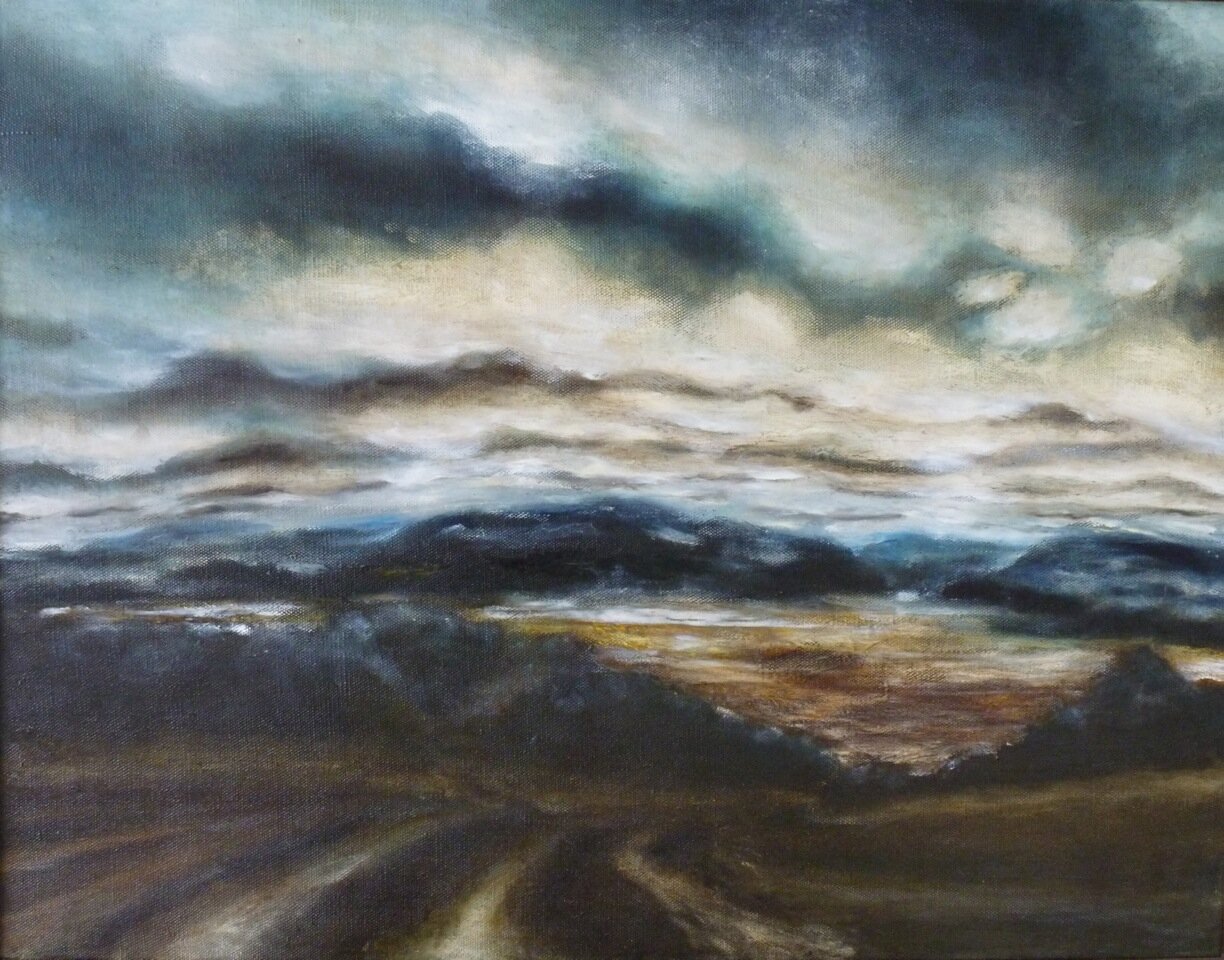
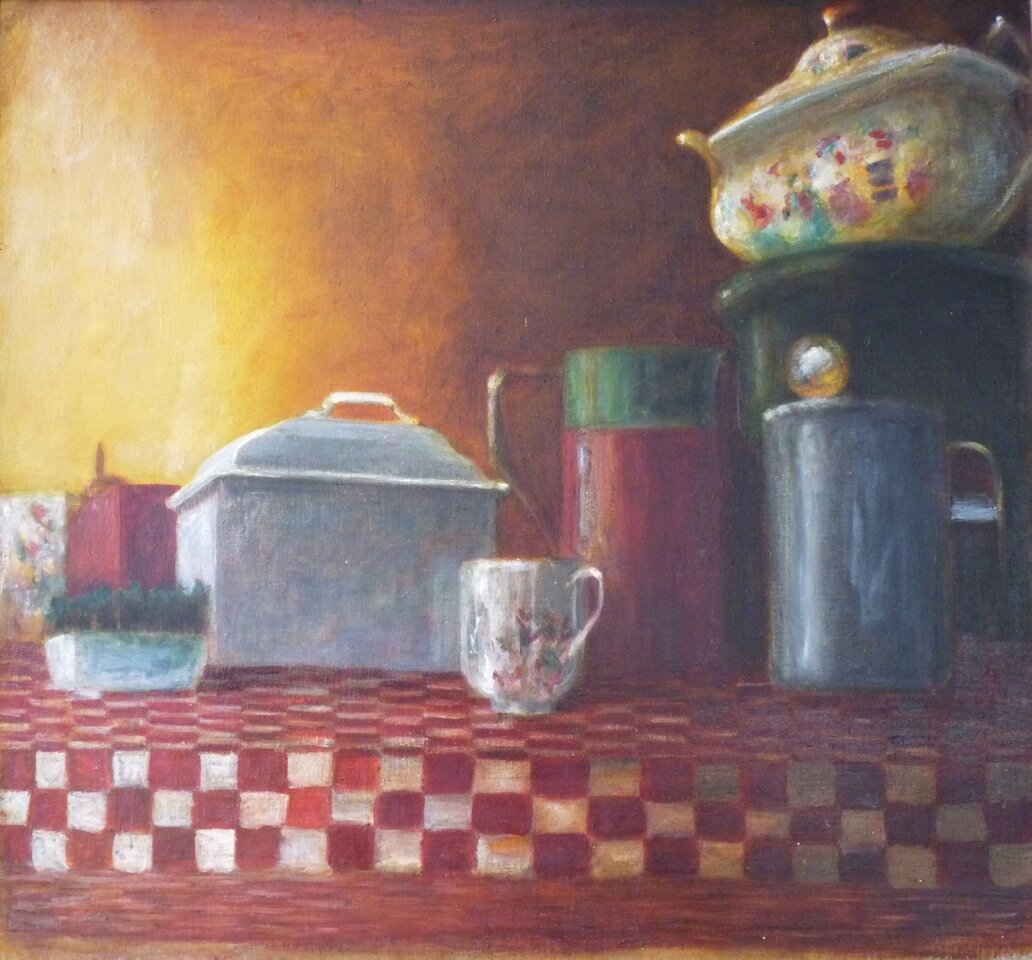
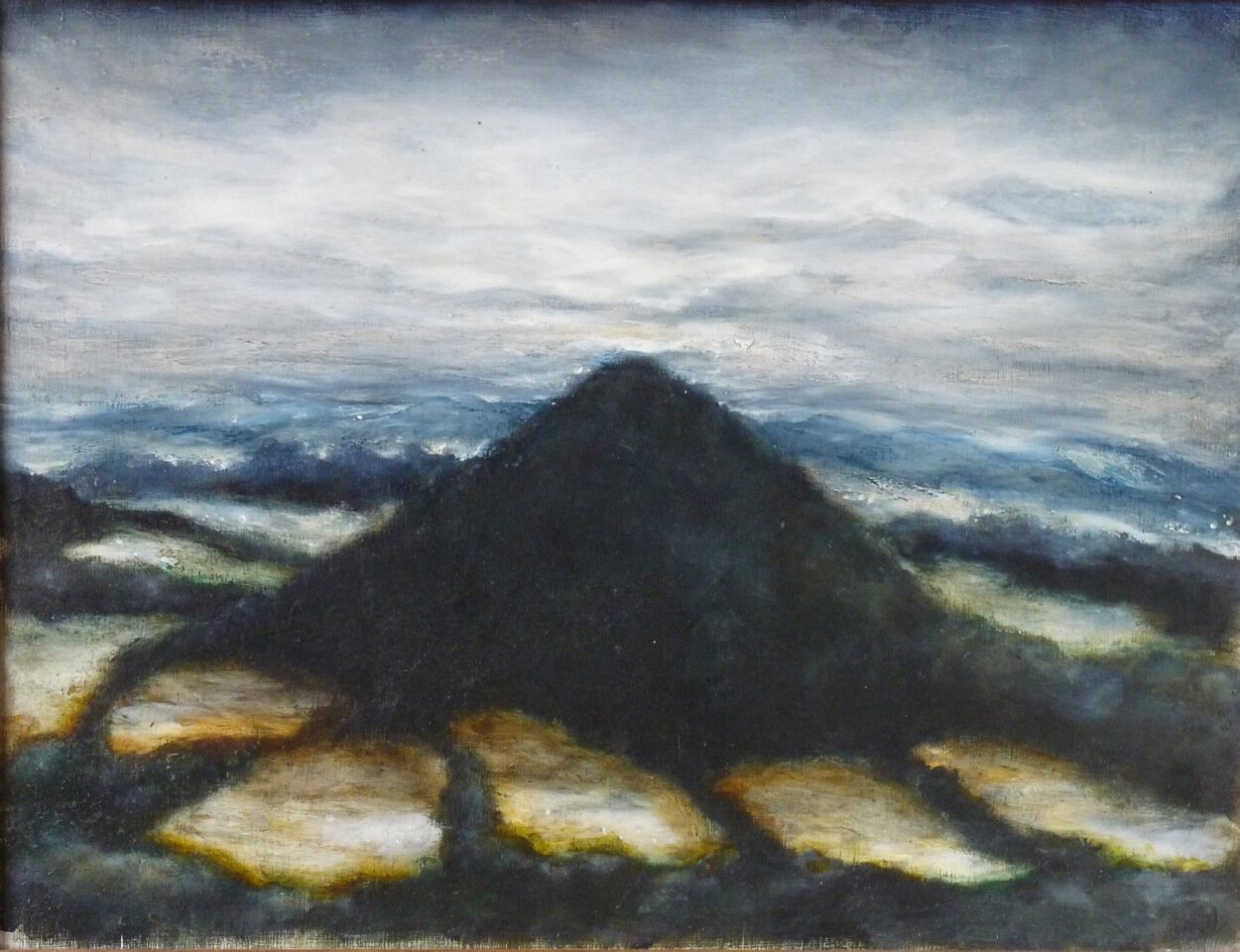
Exhibition of pastels and oil paintings by Catherine Poelsma
Presteigne Assembly Rooms
4 - 20 December
Open:
Fridays & Sundays 10.30 - 3.00
Saturdays 9.00 - 2.00
GRANDFATHER AND THE MOVIES - Tony Lawson
Way back in 1917, my grandfather Robb Lawson wrote a book entitled, The Story of the Scots Stage. A quick internet search reveals that there are still used copies out there, and incredibly an Indian company that will print you a facsimile.
Robb was variously, a journalist, a critic and a publicist for United Artists when Charlie Chaplin, Mary Pickford and others owned the studio.
During this locked down, socially distanced life, I’ve been going through anything that remains of his: papers, photographs or books, I even found a ‘flicker-book’ that shows him, however briefly, in a rather jolly mood. I also found two blank sheets of writing paper. Perhaps you remember the shape of those small sheets, nine by seven inches, but covering almost half the page are printed lists of the publications he’d written for and the names of institutions he belonged to. Evidently he wasn’t just a publicist, but also a self-publicist.
There’s a silver-plated cup presented to him in 1935 by the “British Film Critics” when he left “The Kittle Cattle that are United Artists.” An interesting expression I’d not come across before.
Naturally, having been a film editor, I was interested to find several references to film editing. In 1938 he wrote a slender volume for Pitman’s called, Films in the Making, in which there’s a short paragraph where he talks of “the final cutting.” In those days film editors were often given the more practical title of “film cutters.”
Here’s what he wrote:
“When the work of production is completed, comes the most exciting task of all – the final cutting. In order to secure a smooth-flowing, untiring screen-story, it is found necessary to reject thousands of feet of film. In that task the film editor must be ruthless in his methods. The camera has “taken” perhaps 30,000 feet of pictures. This must be reduced to 6000 feet (that’s about one hour - TL) as the average audience gets weary of anything longer.”
So he suggests that editors, that’s me, are ruthless. I think that might be true.
It’s also true that, “audiences get weary.” I have been responsible for one or two long films, but just an hour?
Further searching found a collection of short articles with titles that would seem to have been destined for movie magazines and written in a rather jocular in style. Amongst them is a piece called, From Script to Screen: What Happens Between which offers a brief rundown of how a movie is made, and another reference to film editing. Here he says something far more disturbing:
“…the Final Cutting, the heart-breaking work of deciding what shall either be included or rejected. That precious scene where the Star poured her very soul into an emotional splurge, may have sizzled out on the microphone, but will find its way into the celluloid waste bin. The executioner, the Film Cutter, has to be ruthless. Out of the 40,000 feet that has been filmed, he must reduce the picture story into a screening time of 100 minutes – roughly 8000 feet.”
So now I’m not just ruthless, but an executioner as well!
But he goes on, and it gets really weird. “And in view of the moanings that ensue from screen-players, whose precious scenes are rejected, I think it is well that the Film Cutter is secreted usually in a fire-proof chamber and is seldom visible either to screen-players or public. His physical safety is the Producers first concern. To make it safer still, he frequently leaves out his name on the Credit title.”
Well, I never went without a credit, but “secreted” and “seldom visible” does ring a bell. Come to think of it, not so very different to this pandemic avoiding life we’re leading at the moment.
And just to be clear, a disappointed actor has never attacked me, but I suppose there’s always time.
ART@THELODGING - Richard Studer
"Retrain!" was the rallying call of our government to lasses and lads like myself - after all what is the point of 'Culture' (to those who are both artless and tactless in their doings...)?
Unlike Fatima, the eponymous ballerina of the government's ill-conceived media campaign, I have no intention of retraining in cyber security. However, after a quarter of a century working as a Designer and Director of Opera, financial needs must and this autumn I joined the staff of our local museum to eek my savings out in this enforced sabbatical. Not one to stand still (or even stand at a till) for too long, cunning plans were formulating to replace a temporary lack of purpose and creativity...
It soon transpired that I was not the only one considering staging an art exhibition pre-Christmas to fill a large hole in my diary. Furtive meetings in the churchyard and Brinks Lane with Ms. Tennant-Eyles and Ms. Kirkby led to a plan, the bringing together of artistic forces and a building that would otherwise remain empty of the joy of living, breathing, glorious voices amidst the quiet of a covid winter. Ever wondered what happens at the museum during its winter closure? I'll tell you - it's Kids, hundreds and hundreds of Kids visiting on their seasonal school trips, now cancelled. "Education, Education, Education" that's what winter at the museum is about - a far more heartening rallying cry from a previous incumbent of No 10.
The result of those clandestine autumnal meetings is Art@TheLodging a celebration of the museum, art and the tenacity of good people to find a way to make the best of these difficult times. The exhibition will be held over all three stories of the museum. Twenty five artists filling every room, nook and cranny from the cellars to the day rooms, bedrooms, courtroom and bathrooms.
From far and wide (and local) we shall gather with our wares to entice you inside. Painters, sculptors, potters, ceramicists, textiles, printmakers, basket weavers and leatherworkers to amuse, delight and challenge you with their work just as the arts should. Re-decorated the house this lockdown? Treat yourself to a slice of government decried culture to hang on your wall or artfully place by the haphazard collection of fine literature (unread), Ottolenghi recipes (untried) and comedy box sets (unamused) that are no doubt strewn across your Lockdown coffee table. Pick up a bargain for under a fiver in the Radnor Room Market Place and embarrass, with your wondrous gift of art, the heinous Aunt who shall no doubt proffer another violet scented eu de toilette, guaranteed to keep the moths out of your knickers this Christmas...
The Circuit Breaker is over so let us all emerge (somewhat broken but not yet beaten) from the darkness amidst this winter of discontent. There shall be Light - even in the depths of the museums cellars - a re-enactment of history where once again oil and gas give way to new fangled electricity to illuminate the treasures we lay out before you...
art@TheLodging. Saturday 28th & Sunday 29th November, Friday 4th, Saturday 5th & Sunday 6th December. 10.30-5pm. There is a small entry charge of £3. This event is in support of The Judge's Lodging Museum, Broad Street, Presteigne LD8 2AD
The museum has been safely open this autumn and we only ask our guests to follow the guidelines for museum visiting during the exhibition, our team of volunteers and staff are there to help. This is a selling exhibition so you are welcome to take your purchases home with you on the day, payment by card would be appreciated.
Artists - Jason Braham, Julienne Braham, Bobby Britnell, Clare Conrad, June Coveney, Simon Dorrell, Ruth Kirkby, Charles MacCarthy, Daniel MacCarthy, Tania Mosse, Clair Murphy, Josh Partridge, Celia Perceval, Kitty Perceval, Alex Ramsay, Mary Smith, Richard Studer, Gill Tennant-Eyles, Helena Tudgay, Malcolm Turner, Jackie Yeomans, Helena Watt, Jessica Watkins, Brontë Woodruff, Matthew Wood.
IN PRAISE OF WRITER’S BLOCK - Rhiannon Hooson
I wrote this piece during the summer, and originally published a longer version of it at inkandoaktree.com, but I thought it might be of interest to anyone else who, like me, has been trying to sustain their creative work over the past year. At the time, I had just had my second book accepted, and was trying to finish it.
On March 6th, 2020, I sat on the train from Cardiff to Leominster and wrote my last poem.
The previous evening I’d given a reading at the Chapter Arts Centre, and afterwards met many interesting people who all held out their hand for me to shake, then withdrew it again with a look of mild, abashed panic. “We’re not allowed to do that anymore, are we?” they joked, then leaned in close to talk to me anyway.
It was a strange evening, the day the second and third cases of Corona Virus were discovered in Wales, both in Cardiff. We felt silly for what precautions we took; sat around a small table afterwards reassuring each other that it would be a long time yet before anything changed. A week later I cancelled a research trip to Cornwall and closed the little library where I work one day a week.
The poem I had written on the train sat undisturbed in my notebook. Government advice was for me to self-isolate until the third week of June. Those twelve weeks stretched ahead, strange and unknowable and full of promise. I had such plans: in that time, I reasoned, I could finish a first draft of my novel. I could round out the collection of poems I was working on, neaten it up and send it off early to my editor. I could finish the essay I had started the previous week.
Each morning I walked in the quickwind sun on the hill, my dog scaring up pheasants from the verges, and the views unfolded for hazy miles in all directions. The hill was empty. I felt such amazing potential. But each day as I walked back down the hill it dissipated.
Days ticked by. I perfected necessary routines involving Dettol and hand wipes. No writing came. I could not concentrate.
At first, of course, I panicked. There was so much time, but it was passing so fast. I felt wasteful. “At least now,” people kept saying, “you’ve got plenty of time to write.” But I couldn’t. Every time I heard that phrase a little spike of panic shot through me. In my head a single phrase repeated endlessly: if not now, when?
Days ticked by in a rush. No writing came. I could not concentrate.
I walked on the hill and spring opened around me. Swallows arrived, and then swifts and yellowhammers. Lambs sun-bleached among the new spears of bracken, and gradually something wonderful happened: I stopped panicking.
I decided, in a rush of reckless relief, that I would stop trying to write. I decided to embrace my writer’s block.
Writing is a skill made up in large part of observation. When we learn to write we are learning to observe, and to pick out which details are pertinent, which details are the ones that tell the story. As soon as I stopped trying to write – vowed, in fact, not to write at all – my observation skills kicked into overdrive.
My world had contracted to a small one, a simple one, but I trod every inch of it and mapped it in my head like a master cartographer.
I heard the mice beneath the mat of last year’s auburn bracken, where it leans against the crumbling wall. I heard the raven call across the hill to her mate. I was privy to small domestic stories that had taken place in my house before I moved in: the painted-over pencil grooves that marked a child’s height year on year, the broken tile replaced at an angle in the bathroom. I saw where a hedge had once cast shadow, and left bluebells growing in the sun as the only evidence it had been there.
I itched to write it all down, but I didn’t. It was enough to see these things, and to acknowledge them. Not everything, I thought, needs to be a poem. I walked the hill each day and came down rich with the world.
After a week or two I became aware of a second effect. I might not be writing, but I was constantly thinking about it. I thought about poems I had written over the last year, and how they might fit together as a collection. I thought about that collection as a whole, and where the gaps were that would need to be bridged with new work. I would sit reading by the open kitchen window in the evening, while the house martens and swifts sliced the sunset air, and suddenly be struck by some new solution.
Everything was inspiring and inspiration became something plentiful and joyful and cheap, not some rare thing to be hoarded. I wrote nothing down and I forgot ideas and none of that mattered. I felt more creative than I had in years.
We have, I think, romanticised the idea of writer’s block, put it to use as part of our identity. But what we call writer’s block is not a block at all. It is a shift in process from external to internal, from conscious to (partly) subconscious. It is a response to factors not under our control, and it can be one of the most surprising, galvanising, energising elements of our practice, if we let it.
GARDEN @ No 3 - Sabina Rüber
Sometimes it is scarcity that inspires creativity, draws the eye and allows our attention to focus more readily. It is that way now in the garden. The abundance has gone, I'm no longer spoiled for choice. But one can savour the few things that endure and especially those that dare to perform at this late stage. The Autumn crocus, potted up only 2 months ago now providing small almost glowing islands of intense blue. The little tomato still hanging around refusing to ripen, instead turning an incredible unreal colour. The startling pink of the Amarines flowering for the first time @No 3.
The first frost is a keynote of change especially for the dahlias. This year thankfully forewarned by friends, I was able to gather those last few usable flowers, arranging them with other stragglers for a final tribute to a wonderful season. And it is catalogue time. Days of looking through this year's pictures - choosing images for next year's catalogues. It’s a rewarding and often surprising time looking back through a year's worth of work, being reminded of what has been and will hopefully be again soon … along with the new. There is always more….
The beautiful and delicate Autumn flowering Crocus pulcellus and my fluorescent ‘pet tomato’ refusing to turn red.
Bubble gum pink Amarine ‘Anastasia’ and the softer Amarine tubergenii Belladiva providing an extra splash of colour.
Bright Red : Cotoneaster horizontalis and hips of Rosa canina.
Symphyotrichum ericoides 'White Cloud’. Hesperantha coccinea ‘Pink Princess’ - white flowering with only a hint of pink in its buds.
The dahlia field after the first frost:
This end of the season's splendour is dramatic - black leaves and flowers drained of their once vivid colours. It's a fascinating transformation, sudden and strangely beautiful.
The last blooms:
Dahlias with hydrangeas, the last rose, cobaea, chrysanthemums ... and a small vine of green cherry tomatoes...
In praise of the US of A.
History is not bunk.
© Peter Wright. November 2020
It may seem odd to be writing in praise of America after the goings-on of the last few years, but while some people who are undergoing a midlife crisis will jump on a Harley-Davidson and ride off into the wilderness to rediscover who they are, Trump’s version has crashed into a wall.
America was great….in parts, while also being deeply flawed. My personal experiences of the country have been mainly associated with the making and racing of automobiles, but they have taken me briefly to the heartlands, where much of this identity crisis is now being enacted.
The time was the 1980’s, when bigger, better, and more powerful was great and had been for decades, and the voice of an environmental consciousness relating to CO 2 emissions was still only a murmur. The scene was Detroit, where the majority of our (Lotus’) engineering clients resided: General Motors, Chrysler, Ford. I used to fly there every month or so, and stay a week to visit the projects we were involved with. As soon as we picked up a hire car, whoever was in control of the radio tuned into 94.7 WCSX Classic Rock, or one of the many Motown stations depending on their particular tastes. GM's Technical Centre was located on 710 acres of Warren, a suburb of Detroit, and employed 21,000 scientists, engineers and technicians – not so much a factory or laboratory, more a town somewhat larger than Presteigne. This is where most of my visits took place, as GM was in the process of buying Lotus.
However it was Dearborn, home to Ford, that fascinated me: Ford’s Rouge River manufacturing complex covered about 1000 acres, of which nearly half was factory floor. 100 miles of rail tracks took coal and iron ore from the docks on the Rouge River to the iron and steel furnaces and Edison power stations. Over the hundred years since it was constructed, hundreds of thousands of Model T parts, Model A’s, Jeeps and aircraft engines for the War effort, Fordson tractors, Mustangs and now F150 trucks have rolled off the lines at the other end. Magnificent then, or an appaling prospect now, depending on one’s viewpoint.
In spite of Henry Ford assertion that "history is bunk", he had an acute sense of history, not only of his place in it, but also the place of those Americans pioneers he admired and had become friends with. He particularly held Thomas Edison, inventor of the light bulb, in high esteem, whose inventions powered and lit Ford’s factories. Ford had worked for the Edison Power Company and rose to become its chief engineer before starting to make his own automobiles. Known as the Vagabonds, the Ford, Edison and Firestone families, often accompanied by naturalist John Burroughs, used to go on camping trips and picnics together in the Adirondacks and Catskill mountains. They were very well organised trips, sometimes involving 50 vehicles in a large convoy of Fords. Nowadays this would be called "networking".
To immortalise these people, their enterprise and their invention, Henry Ford created two wonderful museums in Dearborn. The better-known of the two is The Henry Ford Museum of American Innovation. This is a sprawling space dedicated to American life and ideas, and includes the Rosa Parks bus and JFK's Lincoln limousine – yes, the actual car - along with all the other Lincoln presidential limos from FDR to Ronald Regan, with their 2inch thick armoured glass windows.
My "must see every 12 months" exhibit was one of the Allegheny-class steam locomotives. 60 were built in the 1940s, to haul 10,000 ton coal trains out of the Allegheny Mountains. Each locomotive weighed around 350 tonnes and produced 7,500 horsepower. The only word to describe it, sitting there silent on the parquet floor of the museum, is "awesome".
Chesapeake and Ohio Railway no 1601, "Allegheny", 2-6-6-6, by the Lima Locomotive Works. Currently on display at The Henry Ford
The museum is not just about transport, but portrays the history of ordinary American life: domestic appliances from the telephone to the radio, the mangle to the washing machine, musical instruments and agricultural machinery, and of course guns. It even has Thomas Edison’s alleged last breath, sealed in a glass tube. This was from a time when many believed that the last breath was the soul leaving the body. Well worth a visit….if you are ever in Detroit!
However, the best is next door, in Greenfield Village. Here Ford collected, or in some cases reproduced the historic and famous buildings and dwellings of America, dissembling them, transporting and erecting them again in Dearborn. From a settler’s log cabin to the Wright Brothers’ cycle shop; from Edison's laboratories, complete with all the original experimental equipment, to the Edison generating plants, which power and light this wonderful museum. Henry Ford’s home is there, in the kitchen of which Ford mounted and ran his first engine in 1893, clamped over the sink so that he could connect the ignition to a light socket while his wife Clara dripped gasoline into the intake, thereby acting as early version of the carburettor. Farmsteads, craft workshops, Main Street, historic houses, all laid out as a village over 12 acres. Do not expect to cover it in a single visit. The first time I went there, I was accompanied by the head of an American company we were working with. His name was Dick Aubrecht, or Dick Ready Brek as my kids called him, and is the most informed person I know. As we walked around the streets he described the history of each building and the importance of their original owners. History is not bunk, and Henry Ford knew it.
The history and accomplishments of the Fords, Edisons and Wright Brothers are totally fascinating, but the building that most intrigued me was the log cabin. This is typical of the dwellings the first settlers in the Appalachians built to meet their essential needs. Fleeing persecution and famine in the UK and Europe, they brought their skills, their ways, and their music. Using only axes, and the abundance of wood they found, they built long lasting dwellings without architects or embellishment. Every aspect and detail was simply what was needed to perform an essential function. Today it is a way of living that is becoming attractive to many people, if only for holidays to escape living in a box in the city.
Years after I stopped going to Detroit, I moved to Presteigne, where Pete and Nigel introduced me to American grassroots music through their wonderful (and much missed) gigs. Cahalen Morrison and Eli West, Jason and Pharis Ramero, banjo makers and performers from the imaginatively named Horse Fly, BC, and the sublime Molly Tuttle are particularly memorable visitors. Molly Tuttle was the first female winner of the International Bluegrass Music Association Guitar Player of the Year award in 2017 and winner again the following year, along with the American Music Association Instrumentalist of the Year. Her guitar playing is mesmerising to listen to and to watch. She started at an early age and is matched by other members of the Tuttle family, as this video of Molly (14), Sullivan (12), and Michael (10), sitting on the sofa playing Diamond Joe, illustrates.
Their father, Jack Tuttle, a guitar teacher and obviously the source of all this prodigy, also plays with the family band. Only the dog seems unimpressed. It is impossible not to notice the lengths of the three kids’ fingers, which is perhaps part of their extraordinary skill, as they scamper like spiders legs across the frets. We have been very priveledged to have Molly come to Presteigne and perform locally.
Old Time music is a fusion of Scottish and Irish music brought by the settlers, and African-American blues and jazz from the slave states in the South. Nowhere is it more established than in the Appalachians, where the Scottish and Irish settled. Played on banjo, fiddle, and guitar, with percussion, when needed, provided by foot-stomping on wooden boards in variations of traditional dances.
The Appalachian settlers built log dwellings, much like the one in Greenfield Village, and subsistence farmed a living in the mountains and forests, by growing corn and tobacco among other crops and livestock. The maize they did not eat they fermented and distilled into whiskey, on which they seldom paid tax. When Prohibition was imposed on the country through the 1920’s and early 30’s, moonshine was run in tuned-up saloon cars, hotted-up to outrun the police; thus were sown the seeds of stockcar racing in America that became the immensely popular NASCAR racing series.
In the late 1980’s I travelled down the length of the Appalachians, having hitched a ride to avoid another flight, with the racecar transporter semi-truck that was taking the cars we were testing from Watkins Glen, on the Finger Lakes in New York State, to Road Atlanta in Georgia. We covered the 900-odd miles in a single, long day. Starting at dawn, we only stopped for steak and eggs for breakfast and when an unmarked police car called up on the CB radio and invited us to pull over for speeding….at 82 mph. My driving companion paid-up and we pressed on, only hesitating when he had to sort out the right gear of the 18 available, to enable the 450 hp diesel engine to haul us uphill, away from a hairpin bend in the mountains.
The people of Appalachia lost their chosen lifestyle when coal was discovered in the mountains, and capital came in and bought their land for mines and logging. Reduced to working the mines to feed the industrial might of America, the Edison power stations and the Ford furnaces, it has been the eventual collapse of coal mining that enabled Trump. Never wealthy, the Appalachians "… didn't know we were poor until the government came and told us we were." Their history is a big part of the culture of America and an unrewarded contribution to America's industrial greatness. We are fortunate to be able to witness their music and the legacy of their extraordinary lifestyle.
History is not bunk.
VIEW FROM STONEWALL HILL - Dick Sawle
23 November 2020.
The temperature on Stonewall Hill was five centigrade. Down in Presteigne it was a cool zero.
HELEN HUMPHREYS - Obituary
Doctor who devoted much of her long medical career to helping women with family planning needs.
My mother-in-law Dr. Helen Humphreys, who died on October 3 aged 101, played a crucial role as medical officer for Birmingham’s Family Planning Association (FPA), starting in the 1960s.
Born Helen Christine Mason to parents who fought for women’s rights and started Birmingham’s first family planning clinic, she grew up in the city, attending Edgbaston High School. She recalled visiting the FPA clinic aged nine, helping her mother pack parcels of birth control supplies to send to patients.
Helen was accepted by Cambridge University’s all-women Newnham College to study medicine. A diligent student, she was also active in C.U.S.C., the university’s socialist club.
Back in Birmingham she met another medical student, David Humphreys; both music lovers, they enthusiastically played piano together. In 1944 they married, and Helen began her long career, first in general practice, then working primarily for women with the FPA.
In the mid-60s she became the first doctor in the FPA’s ground-breaking Domiciliary Visiting Service, which addressed the contraceptive needs of women – many financially challenged or non-English speakers – reluctant to seek such advice outside their homes. It became, she recalled, ‘the largest such service in Britain, and the work of which I feel most proud.’
After World War II the couple started a family and eventually had four daughters. They resumed their medical careers in Birmingham: Helen continued her work with the FPA into the 1970s and also worked for the city’s Brook Advisory Centre. She was involved with setting up Birmingham’s Pregnancy Advisory Service from 1968, against fierce opposition.
In 1965 they bought Knill Court, a small property on the Welsh borders near Presteigne, offering spectacular views of hills and green valleys. After years spent extending and renovating it, Helen and David relocated to Knill in 1980. With their knowledge of music, they made an immediate impact on the area, being instrumental in founding and supporting the Presteigne Festival, which launched in 1983 and has flourished ever since.
David died in 2011, four years after suffering a serious stroke. Helen continued to be an influential, well-loved figure in the Presteigne area, enthusiastically playing her cello and piano, and attending Festival concerts well into her 90s.
She is survived by three of her children – Dr. Carolyn Wilkins, Bridget Ford and Philippa Gritten. Her youngest daughter, Nicola Humphreys, died in 2017.
David Gritten
MADE IN KNUCKLAS GOES TO THE TABLE IN HAY - Lois Hopwood
28th November - Christmas
Lois Hopwood, Dark sky I, Pen and ink on paper, 122 x 228 cm
We held our first Art show in Lottie’s barn during Christmas 2005 and called it Made in Knucklas . There is something very comforting about exhibiting in a group. This Christmas, Stone carving, Pottery and Painting makes a magical exhibition at Val’s Table Gallery in Hay.
This Summer, a friend gave me some big canvases to paint over, so purely in terms of R&D, the lockdown summer was a complete gift of time. I find that a theme evolves as the work comes to a conclusion, rather than the other way round. What emerged as a theme was walking. I find titles begin to form in the same way. This painting is called ‘Walking with my daughter’,
Lois Hopwood, Walking with my daughter on the Beacon, Oil on canvas, 114 h x 152 w cm
It’s twin is called ‘My Son runs through the landscape’.
Lois Hopwood, My son runs through the landscape, Oil on canvas, 114 h x 152.5 w cm
Then there was the garden, like everyone else I know I fell in love with my garden this year. Tony carved out a vegetable patch from the rock and I drew and painted it. This painting ‘Summer of 76’ is reminiscent in palette of 70’s textiles.
Lois Hopwood, Summer of 76, Oil on panel, 60 h x 122.5 w cm
When the kids were very little and attended nursery in Newcastle- upon- Clun, I drew the view on the top of the hills. Now the teens are in Hereford Sixth Form, one of my drawings occupies a table tennis table. I have created a monster.
There is nothing like a deadline for editing the work. Ours is up, we delivered our work to Hay on Monday 23rd.
Tony Hall Potter has filled his studio with large garden pots, all drying out, before going into the kiln because people are ‘carrying on gardening’. Long toms for bulbs and big pastry pots for Christmas presents. Forcers have been very popular throughout the summer. But for this exhibition it’s all about the stoneware glazes where one becomes part of the other. Tony makes his own glazes out of the ash from burning the hedge clippings on the farm. He has planted over 4000 trees since 2012 , a busy man…

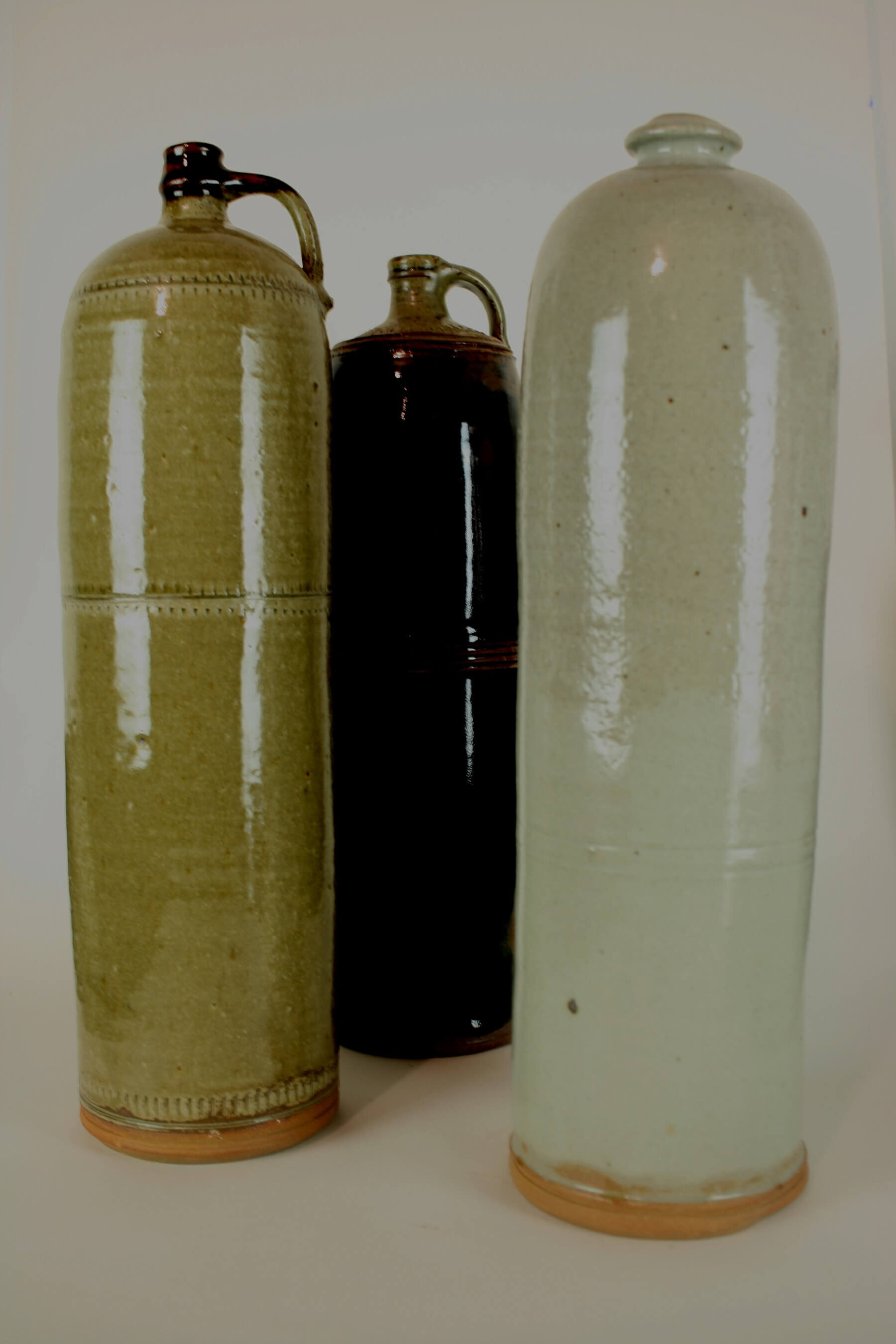
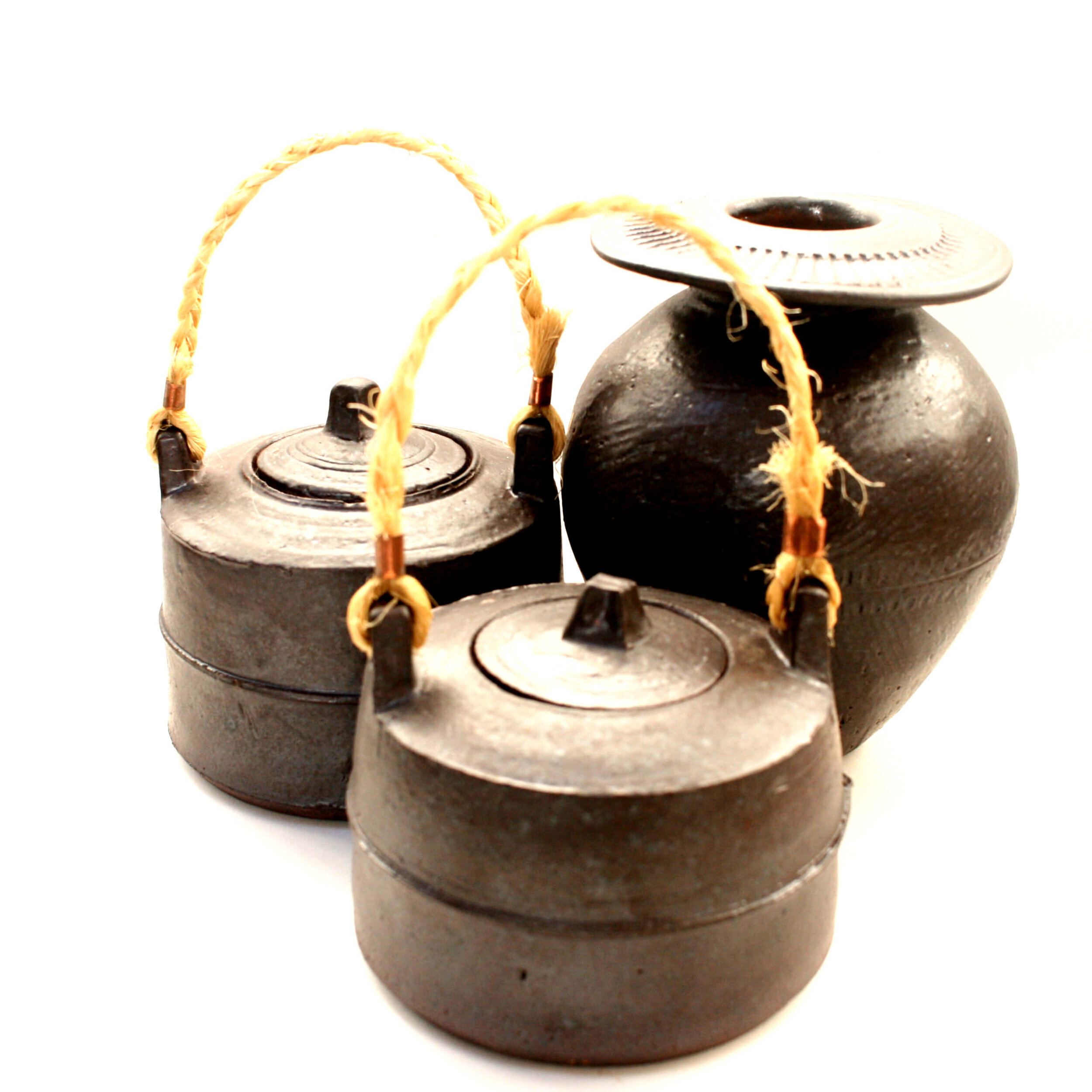
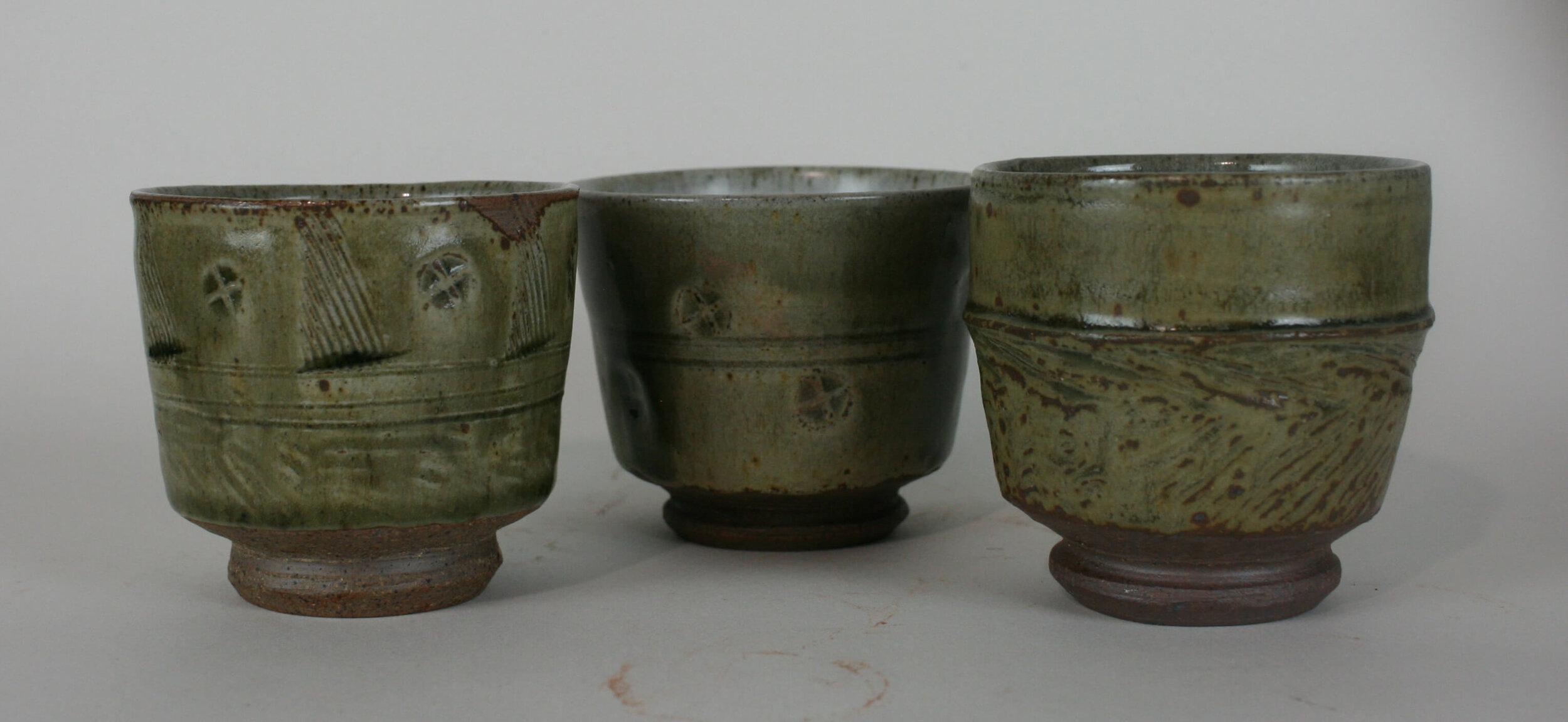
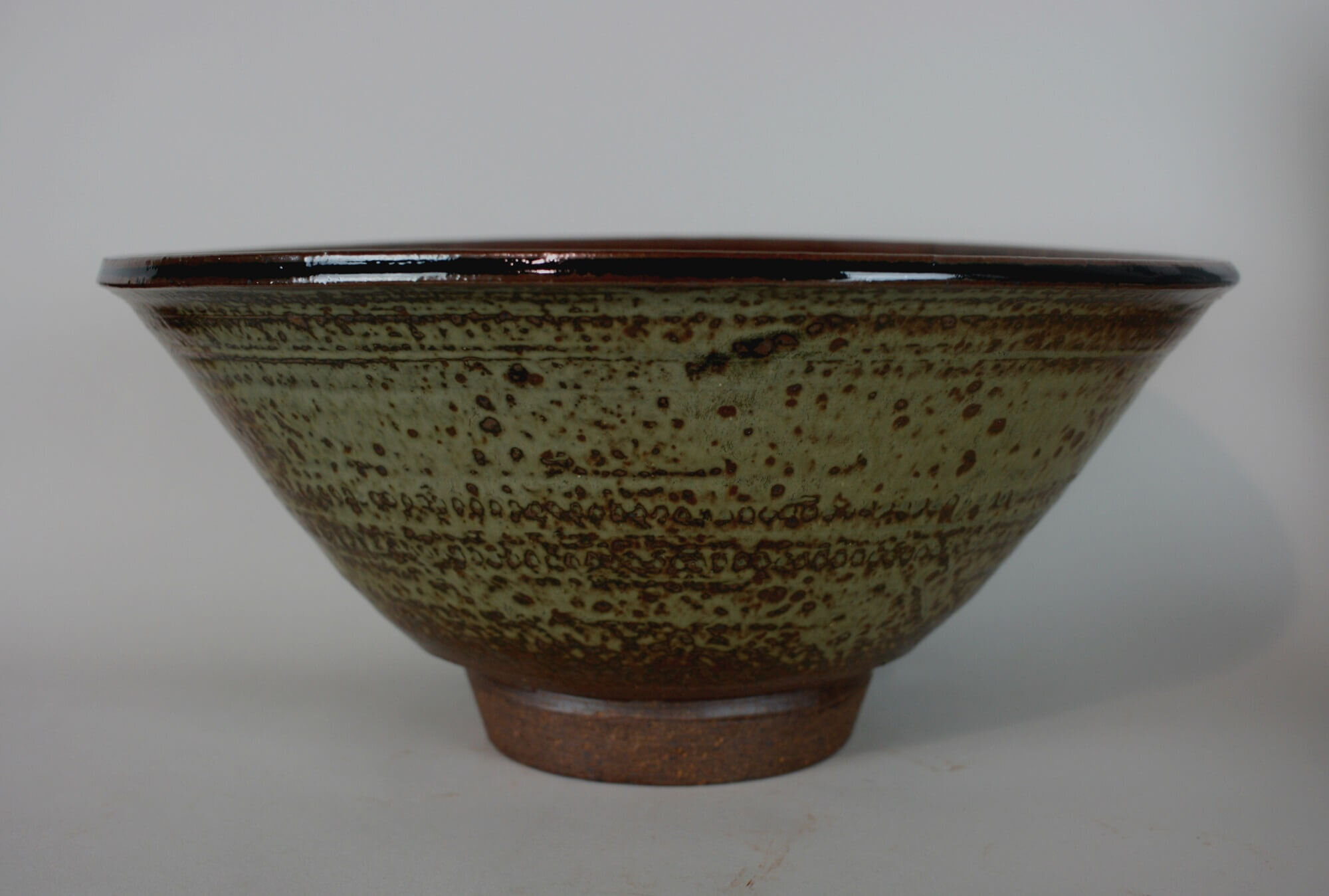
Lottie O’Leary has spent most of this year carrying out commissions, including a large memorial sculpture for Shrewsbury, and says ‘that it has been fantastic to have this exhibition at The Table to give me time to make some new work of my own’.
‘My vessels come from the transition between the structure and exactness of my lettering commissions, and the freedom of working without an end, working purely with shape and texture, using wonderful British stones. I work on several at the same time, leaving them at various stages, giving me time to think about their final shapes, as well as giving me thinking time for other carvings.
My carving The Lost Words was carved for an exhibition for The Lettering Arts Trust at Snape Maltings, inspired by the Robert Macfarlane and Jackie Morris book, the Lost Words, highlighting the words that are disappearing from children lives.
This carving, together with recently becoming a member of Radnorshire Wildlife Trust and this year where we have all appreciated wildlife more, got me thinking about those plants and creatures that are special to where we are here in Radnorshire.
As I write this, I am still carving...nothing like a deadline, so to see these carvings you will have to go and see the exhibition!!
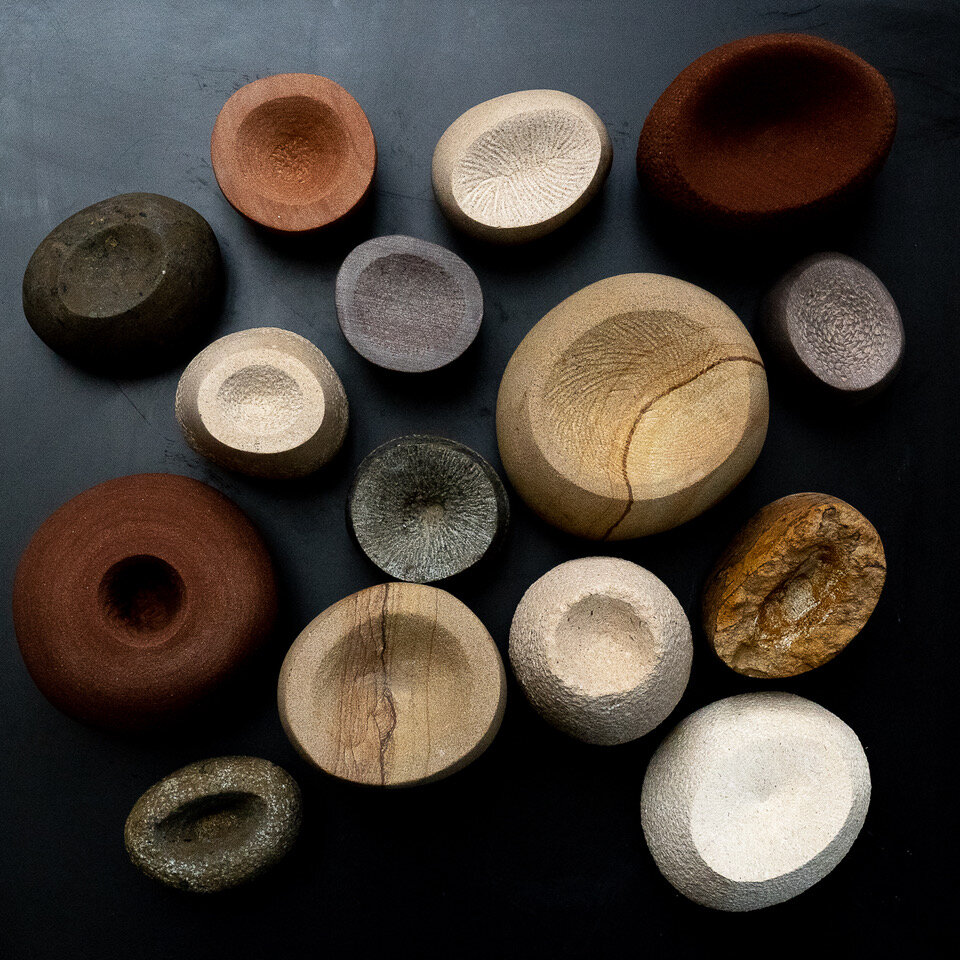
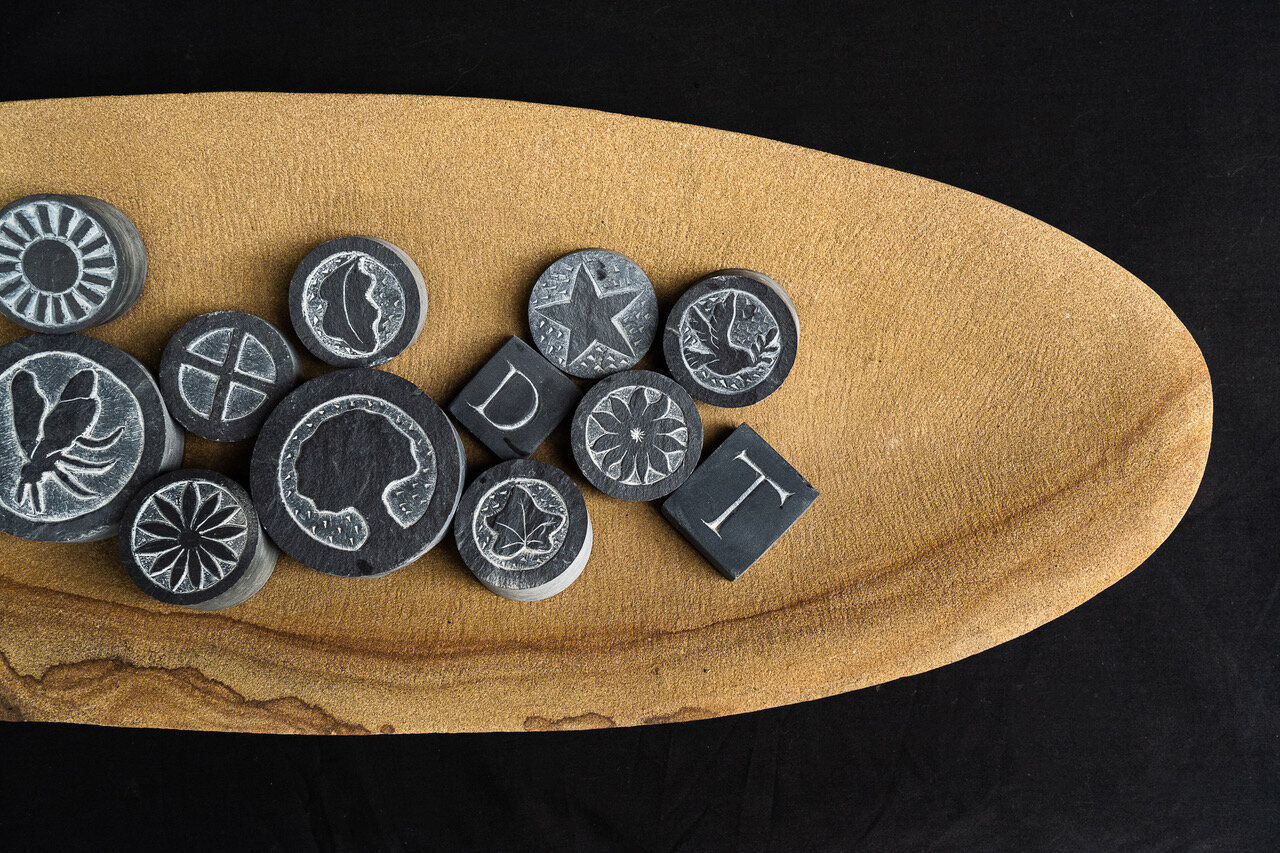
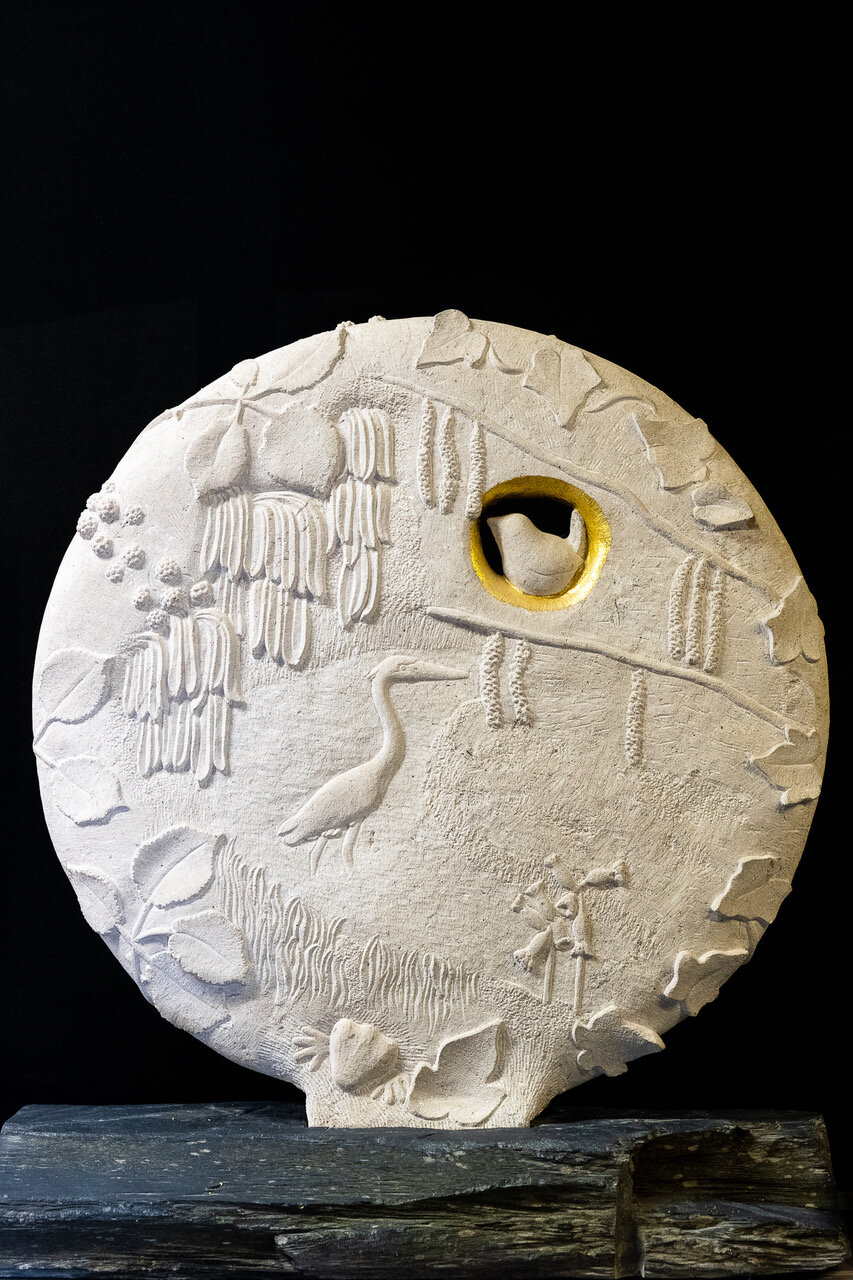
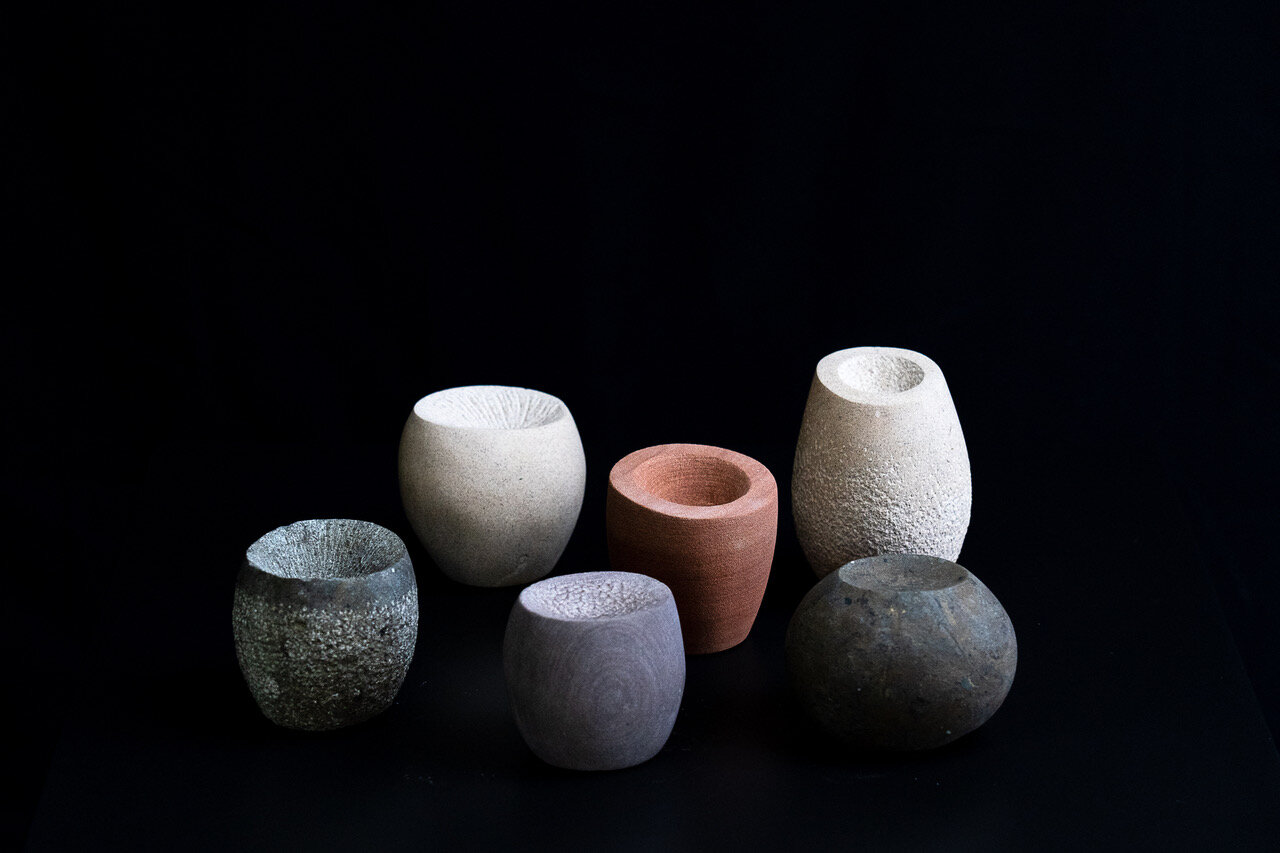
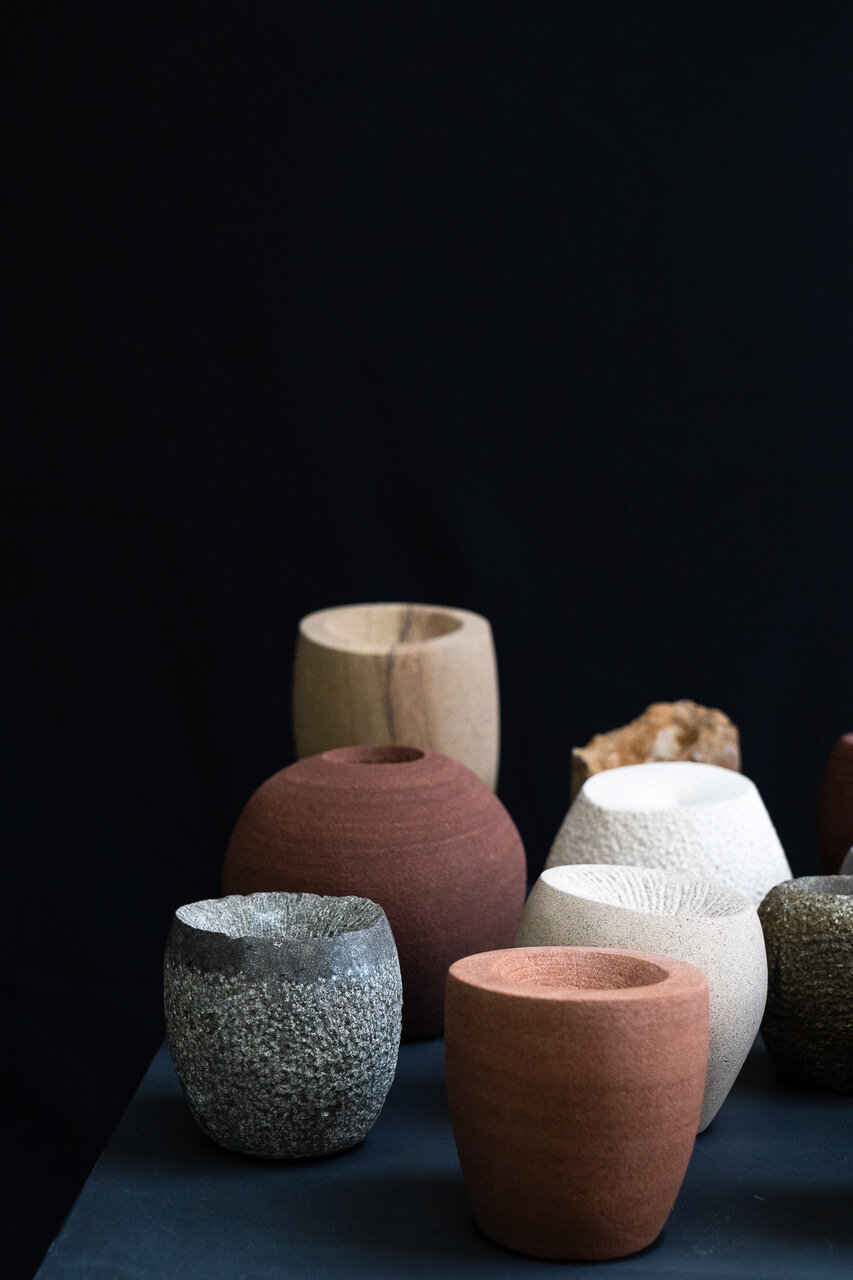
I am really happy to be exhibiting with fellow Knucklas artists Lois and Tony at The Table. Val has done an amazing job keeping the gallery going, through what has been a terrible year for many artists, so do please venture out to visit Hay and the exhibition’,
Lottie O’Leary
HULL 761- Pete Smith
Hull761 as it is still known, is a retirement present from my blacksmith's teaching days at the National School of Blacksmithing, Hereford.
I have for years complained of western sailing dinghies compromising comfort and aesthetics for speed . My colleagues from the Blacksmiths, bought me a set of plans and a licence to build one boat, Hull # seven sixty one.
Hull 761, or Melanesia to give 761 her design title, is a response to a shortage of boat building materials in the Maselyne Islands and is based on the canoes of Vanuatu. Melanesia is the essence of the Pacific craft that over thousands of years spread a culture across the Pacific all the way to Hawaii. Her existence allows the culture of the Pacific to continue to survive.
Hull 761 is constructed using the same stitch and glue processes of the original hulls but with resins and copper wire in lieu of the locally sourced natural materials of the islands.
The series of photos that follow show the construction from its start in late February to to the present day. Hull 761 is an ongoing project that one day will be given a name.
It should be noted here that Hull 761 is a Pacific outrigger sailing canoe with 16 ft LOA and a total beam of 10 ft. It is powered by a 5.8 sq metre Crab Claw sail, said to be more efficient than equivalent Bermudan rigs. Rigging and lashings are of hemp rope which has good linear shrinkage with corresponding expansion of girth, giving very tight lashings for connecting outrigger to the hull.
Butte traps decks and other hull fittings ready for assembly.
The eight plywood (1/4” x 5 ply) components that make up the hull.
Stem and stern inserts being prepared to laminate
Pulling the hull into shape with the copper wire stitches.
Hull stitched together ready for glueing, the stress the components are under at this stage are huge and there is a real risk of the hull being driven into a permanent twist.
Fitting bow deck and fairing to hull with epoxy glue and 1/2” bronze grip fast nails.
Finished hull with bamboo offcuts showing how outriggers are secured to the hull with 5/16” hemp rope.
1 5/8” Deadeye/fairlead spliced into 5/16” hemp rope attached to bow with a Bowline, used to raise/lower mast and make weather-helm adjustments.
Ash Gaffe carved to fit internal shape of bamboo spars for Crabclaw sail.
Launch and shakedown are scheduled for the spring equinox.
EXHIBITION AT THE NEW SHED GALLERY - Linzi Morgan and Penny Hughes
Dreaming of the Sea
This painting hangs in the gallery and was the catalyst for the Shed Gallery opening, as we made it out in the yard during the summer when we were dreaming of the seaside. It is inspired by Van Gogh’s ‘The Sea at Saint-Maries-de-la-Mer’ which we love. As we painted, the idea for the wonderful yard and shed to become a creative space began to crystallise.
Our exhibition at Shed Gallery will include local artists and artists from across the Midlands, all the way west to Pembrokeshire and even further across the sea to Southern Ireland! Our first weekend will run alongside The Judges Lodging’s exhibition and The Assembly Room’s exhibition which is exciting.
Shed Gallery, Green End, Presteigne
Friday 4 - Sunday 6 December
Friday 11 - Sunday 13 December
Open:
Friday & Saturdays 10 - 4pm
Sundays 11 - 3pm
Artist works include pottery, needle crafts, original paintings and prints, raku ceramics, jewellery, Christmas present ideas, greetings cards and more.
How to find - Shed Gallery Green End is behind Daphne's Pizza. From the Corner House go up the lane a little, through the double gates into the yard at the back of Daphne's and the gallery is in the shed.
THE QUIZ!
(Answers here)
And finally - our next blog will be a Midwinter/Christmas edition. If you would like to contribute something to this in the form of art, photography, music, local lore and events past, literature, poems, gardens and food which you think might fit in with our warm, festive theme, please send your stuff to luggblogg@outlook.com.










